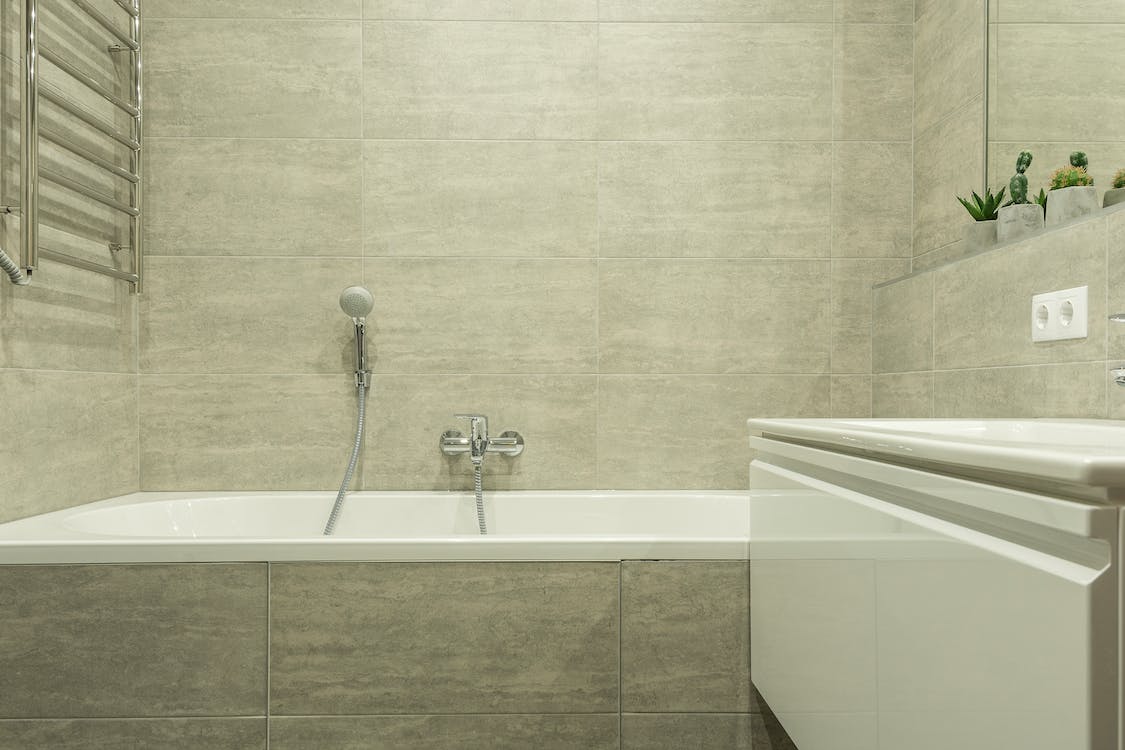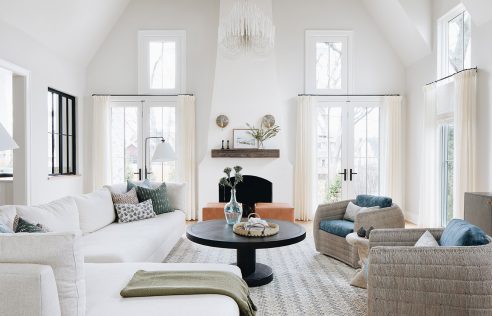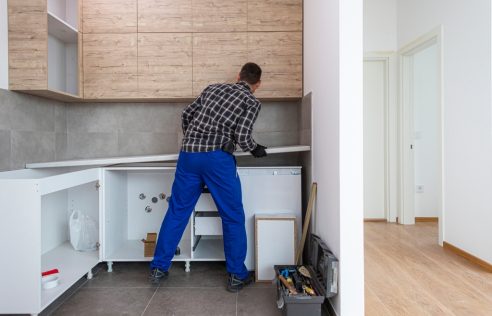How to Choose Your Bathroom Wall Cladding
When it comes to choosing a bathroom cladding, from the walls to the shower enclosures or credenzas, there are many possibilities. Wood, tile, concrete, metal, glass, etc., are to be chosen according to the aesthetics of the bathroom and your budget, even if some basic rules are required.
Some basic rules
Almost any material can be used for your bathroom walls, but by following these rules, you’ll eliminate some of them:
– Think about maintenance:
◦ especially for the walls near the bathtub or basins;
◦ if you choose a messy material, cover it with tile in areas near the tub and sinks.
– Consider the size of your room: for example, stone or marble weigh down the space and are strongly discouraged in small spaces.
– Prioritize brightness:
◦ Some materials reflect light (glass, marble), while others absorb it (granite, wood).
◦ Light colors enlarge the space.
– For wainscoting: opt for a horizontal installation to enlarge the room or a vertical installation that will promote the flow of steam.
– Think about ventilation: some materials, like wood, require excellent ventilation.
Bathroom wall cladding: selection criteria

All materials chosen must, of course, be able to resist humidity, as well as water projections and stains. Think also about maintenance, which should be as easy as possible.
In small spaces, opt for light colors and shine that reinforce the impression of space. But beware, the coating that covers the walls of the bathroom cannot by itself ensure the watertightness of the room and must therefore be coupled with a waterproofing system that combines a resin and reinforcing strips placed at the floor-wall connections and at the junction of the bathroom fixtures.
Good to know: if you are not lucky enough to have a window in your bathroom, opt for controlled mechanical ventilation.
Wall covering materials
Tiles
For the wall, the variety of tiles is greater than for the floor:
– You will have the choice between full-body porcelain stoneware, composed of pressed and vitrified stoneware, at high temperatures. Durable and waterproof, it is also very resistant to scratches and stains.
– Glazed porcelain stoneware, whose surface has been covered with several layers of enamel. It is solid and can even imitate stone, terracotta, etc. Natural stone offers a clean and elegant look.
– Earthenware is made of terracotta tiles covered with several layers of enamel. It comes in a multitude of colors and shades but is very sensitive to shocks.
– The mosaic is an assembly of pastes or glass enamels, but also marble, metal, etc.. Very decorative and customizable, it exists in the form of plates to facilitate the installation.
Paint and plaster
In the bathroom, it is imperative to choose an acrylic or glycerol paint specially formulated for wet rooms, as the strong odor of the latter can be annoying. Choose a washable paint rather than a washable one.
In terms of decorative coatings, the choice is vast and allows you to personalize the decor, but here again, check that it is suitable for use in damp rooms. Among the best-known is tadelakt, a waterproof coating based on lime and natural pigments from Morocco.
Concrete
Whether it is natural concrete (made from cement, water, sand, and additives) or composite concrete (resin-based), it is very trendy in the bathroom.
Many colors and effects are possible (waxed, smoothed, patinated, wood imitation, etc.). Maintenance is easy, and the price varies depending on the type of concrete and the installation.
Wood
On the wall, wood takes the form of solid wood, exotic wood or laminate paneling:
– The first one offers an inimitable style but requires regular maintenance and is to be chosen necessarily adapted to a use for wet room.
– Exotic wood (teak, bamboo, etc.), naturally adapted to humidity, is very expensive.
– Laminate is composed of a paper and resin facing and a core of wood particles or fibers. Resistant, it is also easy to install (including on another covering) and a good quality-price ratio.
Wallpaper
Long in the shadows, wallpaper is making a comeback, including in the bathroom. Beware, to resist moisture, but also be washable, it must be non-woven or vinyl. It is then declined in a multitude of colors and decorations.
Note: don’t hesitate to combine wallpaper with other wall covering materials.
Covering bathroom walls: the special case of credenzas
The credenza is a wall covering that is installed on the walls to protect them from water, stains, and even heat.
It is placed around the basin or sink, around the bathtub, and in or around the shower stall. With its very decorative aspect, it can be made of glass, aluminum, tiles, acrylic, laminate, etc. Easy to install, it can be glued or screwed.
Good to know: there are self-adhesive bathroom credenzas that can be applied to many surfaces. They can be adhesive tiles or aluminum panels, for example. Be careful, they are generally not repositionable.
Shower enclosures
More aesthetic and durable than a simple shower curtain, shower enclosures add a touch of elegance.
Solid, they can be easily adapted to all configurations, but also take straight or curved shapes:
– The glass brick, composed of two thick glass blocks hot-welded together, is perfect for letting light through while preserving privacy.
– Waterproof or cement-based plasterboard can be screwed onto a metal or wood frame for shower enclosures that can be installed quickly and without major work.
– Another possibility is hard foam panels made of extruded, reinforced and waterproof polystyrene, which can also be used as a shower tray.
– Or cellular concrete bricks, very light and easy to cut with a simple saw, which can be tiled or even drilled to integrate glass bricks.
Transparent shower enclosures can be completely translucent, frosted, granite or silk-screened for more privacy.
You can choose between glass, from 4 to 8 mm thick, but always with safety features so that in case of breakage it does not produce shards that could cause injury.
Or synthetic materials (acrylic, PVC), less expensive and lighter.
Prices and points of sale of dressing materials
You will find the materials for dressing and bathroom walls in DIY stores, specialty stores, and on the Internet.
– For tiles, count from $15 for glazed stoneware tiles or mosaics to more than $50 per m² for natural stone.
– For paint, count from $10 to more than $30 the liter.
– For tadelakt ready to install, count about $30 for the bucket of 5 kg.
– For concrete, count from $80 to $200 the m² according to the type of concrete and the installation.
– For solid wood, count from $30 to more than $100 the m².
– For laminate, count from $10 to more than $50 the m².
– For wallpaper, count from $6 to $40 per roll.
– For a credenza, count from $45 for a small credenza to more than $350 for a large glass credenza.
– For a waterproof plasterboard, count from $5 the m².
– For cellular concrete bricks, count from $10 the m².
– For a fixed glass wall of 100×200 cm, count from $350 approximately.


